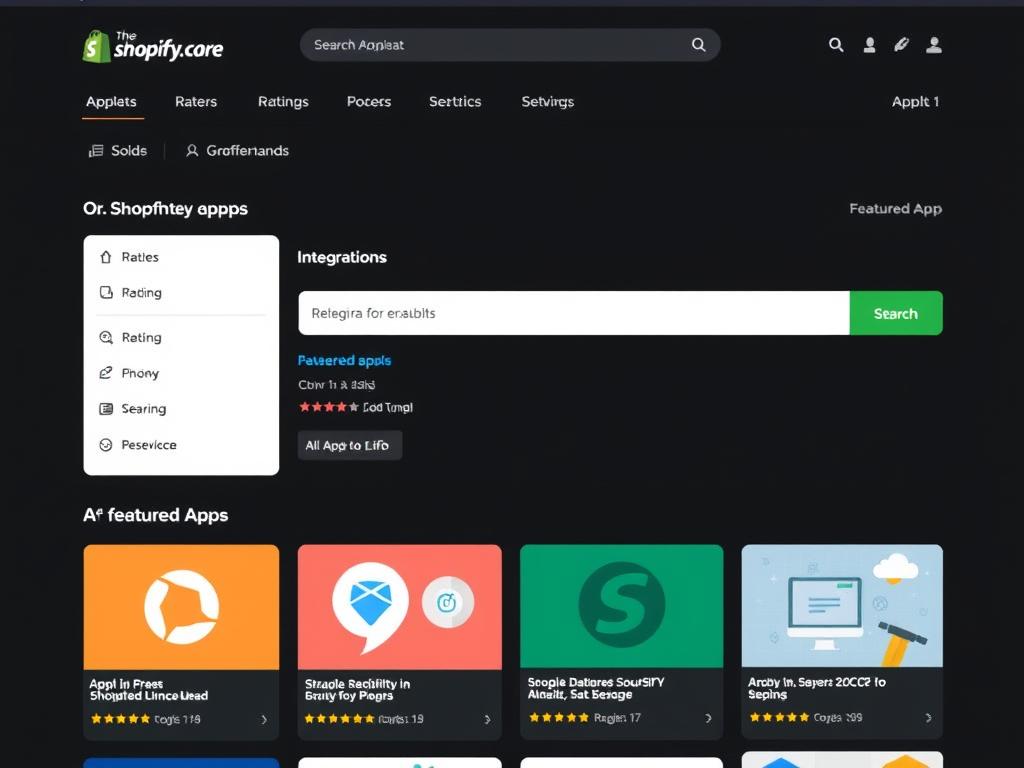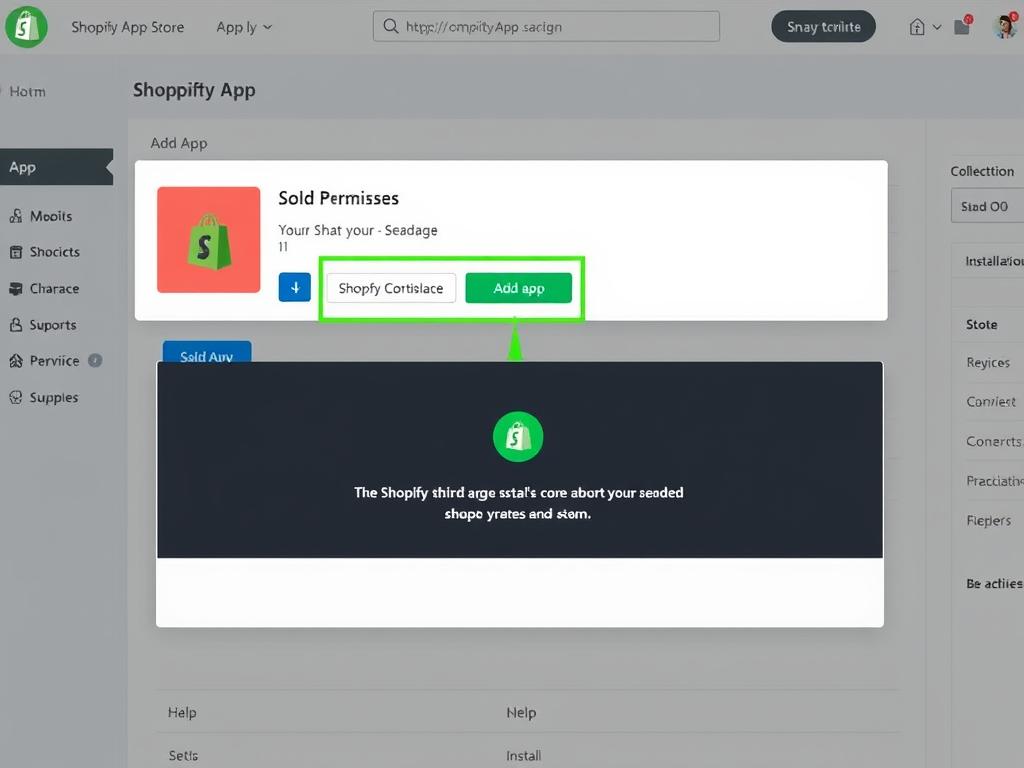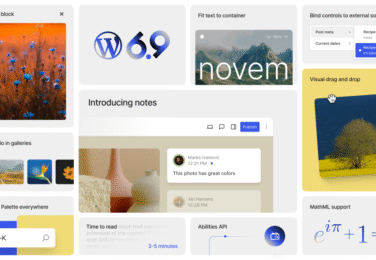How to Seamlessly Integrate Third-Party Apps with Shopify: A Complete Guide

Table of Content
In this comprehensive guide, we’ll walk you through everything you need to know about Shopify third-party app integration—from understanding the benefits and selecting the right apps to implementing them successfully and maintaining optimal performance. Whether you’re a technical expert or a business owner with limited development experience, you’ll find actionable insights to enhance your e-commerce operations.
Benefits of Integrating Third-Party Apps with Shopify
Integrating third-party apps with your Shopify store offers numerous advantages that can transform your business operations and customer experience. Let’s explore the key benefits:
Automation of Repetitive Tasks
One of the most significant advantages of third-party integrations is automation. Apps can handle routine tasks like inventory updates, order processing, and customer communications without manual intervention. This not only saves time but also reduces human error, allowing you to focus on strategic aspects of your business.
Enhanced Store Functionality
While Shopify offers robust features out of the box, third-party apps extend your store’s capabilities with specialised functions. Whether you need advanced product filtering, custom checkout options, or unique promotional tools, there’s likely an app that can add these features without custom development.
Improved Customer Experience
Today’s shoppers expect personalised, seamless experiences. Third-party apps can help deliver this through personalised product recommendations, loyalty programs, enhanced customer support options, and streamlined checkout processes—all contributing to higher conversion rates and customer retention.
Better Data Analytics and Insights
Integration with specialised analytics tools provides deeper insights into your store’s performance, customer behavior, and market trends. These insights enable data-driven decisions that can significantly impact your business growth and marketing strategy.
Business Scalability
As your business grows, your operational needs become more complex. Third-party integrations allow your systems to scale alongside your business, handling increased order volumes, expanded product catalogs, and more sophisticated marketing campaigns without requiring a complete platform overhaul.
Need Help Choosing the Right Integrations?
Our Shopify integration experts can analyse your business needs and recommend the perfect app ecosystem to maximise efficiency and growth.
10 Popular Third-Party Apps for Shopify and Their Use Cases
With thousands of apps available in the Shopify App Store, finding the right ones for your business can be overwhelming. We’ve curated a list of ten popular and highly effective third-party apps across different categories to help you enhance your store’s functionality.


1. Klaviyo
Category: Email Marketing
Klaviyo specialises in e-commerce email marketing with powerful segmentation capabilities. It syncs customer data from your Shopify store to create highly targeted email campaigns based on purchase history, browsing behavior, and customer lifecycle stage.
Use Case: An apparel retailer uses Klaviyo to send personalised product recommendations based on previous purchases, resulting in a 30% increase in repeat customer sales.

2. QuickBooks
Category: Accounting
QuickBooks integration automatically syncs your Shopify orders, payments, and expenses, eliminating manual data entry and ensuring accurate financial records. It streamlines tax preparation and provides real-time insights into your business’s financial health.
Use Case: A home goods store saved 15 hours per week on bookkeeping by automating the transfer of sales data from Shopify to QuickBooks.

3. Mailchimp
Category: Email Marketing
Mailchimp’s Shopify integration synchronises customer data and purchase history to power targeted email campaigns. Its user-friendly interface makes it easy to create professional-looking emails, automated workflows, and detailed performance reports.
Use Case: A beauty products store uses Mailchimp to automatically send abandoned cart emails, recovering 15% of potentially lost sales.

4. Oberlo
Category: Dropshipping
Oberlo simplifies dropshipping by allowing you to import products directly from suppliers to your Shopify store. It automates order fulfillment, inventory management, and pricing updates, making it easier to run a dropshipping business.
Use Case: A new entrepreneur launched a niche product store using Oberlo to source products and automate fulfillment, reaching $10,000 in monthly sales within three months.

5. ShipStation
Category: Shipping & Fulfillment
ShipStation streamlines your shipping process by importing orders from Shopify, automating label creation, and offering discounted shipping rates. It supports multiple carriers and provides order tracking and delivery notifications.
Use Case: A craft supply store reduced shipping processing time by 75% and cut shipping costs by 20% after implementing ShipStation.

6. Yotpo
Category: Reviews & Social Proof
Yotpo helps collect and display customer reviews, photos, and Q&A content on your Shopify store. It automates review requests, moderates content, and leverages social proof to build trust and increase conversions.
Use Case: An electronics retailer saw a 40% increase in conversion rate after implementing Yotpo to showcase verified customer reviews on product pages.

7. Smile.io
Category: Loyalty & Rewards
Smile.io enables you to create customised loyalty programs, referral campaigns, and VIP tiers for your Shopify store. It incentivises repeat purchases and customer advocacy through points, rewards, and exclusive perks.
Use Case: A skincare brand implemented a tiered loyalty program with Smile.io, increasing customer lifetime value by 28% and boosting repeat purchase rate by 35%.

8. Omnisend
Category: Marketing Automation
Omnisend provides omnichannel marketing automation for Shopify stores, combining email, SMS, push notifications, and social media ads. It offers pre-built workflows for cart recovery, welcome series, and post-purchase follow-ups.
Use Case: A fashion retailer implemented Omnisend’s automated workflows across email and SMS, resulting in a 152% increase in revenue from automated messages.

9. ReCharge
Category: Subscriptions
ReCharge enables subscription-based selling on your Shopify store, handling recurring billing, customer portal management, and subscription analytics. It supports various subscription models, including fixed, variable, and build-your-box options.
Use Case: A coffee roaster implemented ReCharge to offer subscription deliveries, growing recurring revenue to 65% of total sales within six months.

10. Privy
Category: Conversion Optimisation
Privy helps increase conversions with customisable pop-ups, banners, and flyouts for your Shopify store. It offers targeted displays based on visitor behavior, abandoned cart emails, and coupon code management.
Use Case: A home decor store captured 15,000 new email subscribers in three months using Privy’s exit-intent pop-ups with discount offers.
Not Sure Which Apps Are Right for Your Business?
Our Shopify integration specialists can help you select and implement the perfect app stack based on your specific business needs and goals.
Step-by-Step Guide to Integrating Third-Party Apps with Shopify
Successfully integrating third-party apps with your Shopify store requires a systematic approach. Follow these steps to ensure smooth implementation and optimal performance:

-
Identify Your Integration Requirements
Before selecting any apps, clearly define what you need the integration to accomplish. Consider your business processes, pain points, and growth objectives. Create a list of must-have features and nice-to-have capabilities to guide your selection process.

-
Research and Select the Right Apps
Browse the Shopify App Store or third-party marketplaces to find apps that match your requirements. Pay attention to ratings, reviews, pricing, support options, and update frequency. Look for apps with proven compatibility with your Shopify theme and other installed apps.

-
Install the App from Shopify App Store
For apps available in the Shopify App Store, installation is straightforward:
- Log in to your Shopify admin dashboard
- Navigate to the Apps section in the left sidebar
- Click “Visit Shopify App Store” or “Add app”
- Search for your desired app
- Click the app and then select “Add app”
- Review the permissions requested and click “Install app”

-
Set Up API Integration (For Custom Solutions)
For custom integrations or apps not available in the Shopify App Store, you’ll need to use Shopify’s API:
- Create a private app in your Shopify admin under Apps > Develop apps
- Configure the app’s permissions (API scopes) based on what data it needs to access
- Generate API credentials (API key, password, and access token)
- Provide these credentials to the third-party service or developer

-
Configure App Settings
Once installed, configure the app according to your business needs:
- Complete any required onboarding steps
- Set up data synchronisation preferences
- Configure automation rules and workflows
- Customise user interface elements if applicable
- Set up user permissions and access controls

-
Test the Integration
Before relying on the integration for your business operations, thoroughly test it:
- Create test scenarios that mimic real-world usage
- Verify data is flowing correctly between systems
- Check for any conflicts with existing apps or theme
- Test on multiple devices and browsers if customer-facing
- Validate that automations trigger as expected

-
Train Your Team
Ensure everyone who will use the integrated app understands how to work with it:
- Provide access to app documentation and tutorials
- Create standard operating procedures for common tasks
- Conduct training sessions for team members
- Designate a point person for questions and troubleshooting

-
Monitor and Optimise
After implementation, continuously monitor the integration’s performance:
- Track key performance indicators related to the integration
- Monitor for error messages or synchronisation issues
- Collect user feedback on functionality and usability
- Make adjustments to settings as needed
- Stay informed about app updates and new features

Need Technical Assistance with Your Integration?
Our Shopify integration experts can handle the entire setup process for you, ensuring optimal configuration and performance without the technical headaches.
Common Challenges and Solutions in Shopify Third-Party Integration
While integrating third-party apps with Shopify can significantly enhance your store’s capabilities, you may encounter certain challenges along the way. Here’s how to identify and overcome the most common integration issues:

Challenges
- Compatibility Issues: Not all apps work well together or with your specific Shopify theme.
- Data Synchronisation Problems: Information may not update correctly between Shopify and third-party services.
- Performance Impact: Too many apps or poorly optimised integrations can slow down your store.
- Security Risks: Third-party access to your store data introduces potential vulnerabilities.
- Cost Management: Subscription fees for multiple apps can quickly add up.
- Technical Complexity: Custom integrations may require development expertise.
- Maintenance Burden: Apps require updates and occasional troubleshooting.
Solutions
- Compatibility Testing: Test apps in a development store before adding to your live site.
- Regular Monitoring: Implement verification processes to ensure data accuracy.
- App Audit: Regularly review and remove unnecessary apps to maintain performance.
- Security Review: Verify app permissions and only grant access to required data.
- ROI Analysis: Evaluate each app’s contribution to your business objectives.
- Developer Partnership: Work with Shopify experts for complex integration needs.
- Update Schedule: Establish a regular maintenance routine for all integrations.
Real-World Example: Overcoming Integration Challenges
“We were struggling with inventory synchronisation between our Shopify store and our warehouse management system. Orders would process, but inventory wasn’t updating correctly, leading to overselling. By implementing a middleware solution and setting up automated verification checks, we resolved the synchronisation issues and improved our fulfillment accuracy from 82% to 99.5%.”

Pro Tip: Integration Health Check
Conduct a monthly “integration health check” by verifying that data is flowing correctly between systems, checking for error logs, and confirming that automations are triggering as expected. This proactive approach can identify potential issues before they impact your business operations.
Experiencing Integration Issues?
Our technical team specialises in diagnosing and resolving Shopify integration problems. We’ll get your systems working together seamlessly.
Best Practices for Maintaining Shopify Third-Party Integrations
Successfully integrating third-party apps with your Shopify store is just the beginning. To ensure long-term performance and reliability, follow these best practices for maintaining your integrations:

Regular Updates
Keep all apps and integrations updated to their latest versions. Updates often include security patches, bug fixes, and new features that can improve functionality and compatibility.
- Set a monthly schedule to check for available updates
- Review release notes to understand changes before updating
- Test updates in a development store before applying to your live site
Performance Monitoring
Continuously monitor how integrations affect your store’s performance and user experience. Slow-loading pages can negatively impact conversion rates and customer satisfaction.
- Use tools like Google PageSpeed Insights to track site performance
- Monitor store load times before and after adding new integrations
- Watch for correlations between specific app activities and performance issues
Data Validation
Regularly verify that data is syncing correctly between your Shopify store and third-party applications. Inconsistencies can lead to operational problems and poor customer experiences.
- Implement automated data verification checks where possible
- Manually sample and compare records across systems periodically
- Create alerts for synchronisation failures or discrepancies
Security Audits
Regularly review the permissions granted to third-party apps and assess potential security vulnerabilities. Protecting customer data should be a top priority.
- Conduct quarterly reviews of app permissions and access levels
- Revoke access for unused or unnecessary integrations
- Verify that apps comply with relevant data protection regulations
Documentation
Maintain comprehensive documentation of all your integrations, including configuration settings, customisations, and troubleshooting procedures. This is invaluable for team training and issue resolution.
- Create a central repository for all integration documentation
- Document the purpose and business value of each integration
- Include contact information for support and account representatives
Backup Procedures
Implement regular backup procedures for your store data and integration configurations. This ensures you can recover quickly if problems occur during updates or changes.
- Schedule automatic backups before making significant changes
- Test restoration procedures to verify backup integrity
- Store backups securely and maintain multiple versions
Case Study: Successful Integration Maintenance
“We implemented a quarterly integration review process where we evaluate the performance and ROI of each app, update documentation, and plan necessary improvements. This systematic approach has reduced our integration-related issues by 78% and helped us identify opportunities to consolidate functionality and reduce our monthly app costs by nearly 30%.”

Integration Efficiency Checklist
Use this quarterly checklist to maintain optimal integration performance:
- Review app usage statistics and business impact
- Check for redundant functionality across multiple apps
- Verify data accuracy between integrated systems
- Test critical workflows to ensure proper operation
- Update documentation with any configuration changes
- Review security permissions and access controls
- Evaluate cost versus benefit for each integration
Want a Professionally Managed Integration Ecosystem?
Our ongoing maintenance service ensures your Shopify integrations remain secure, efficient, and aligned with your business objectives.
Real-World Success Stories: Businesses Transformed by Shopify Integrations
The true value of Shopify third-party app integration becomes clear when we look at real businesses that have leveraged these tools to overcome challenges and achieve remarkable growth. Here are three inspiring examples:


Threadwell Boutique
Challenge: This boutique clothing retailer was struggling with inventory management across their physical store and online Shopify presence. Manual updates led to overselling and customer disappointment.
Solution: They implemented an integrated inventory management system that synchronised stock levels in real-time between their point-of-sale system and Shopify store.
Results:
- Reduced overselling incidents by 98%
- Saved 15 hours per week previously spent on manual inventory updates
- Improved customer satisfaction scores by 27%
- Increased overall sales by 32% within six months

GreenBox Organics
Challenge: This subscription box service for organic products wanted to increase customer retention and lifetime value but lacked insights into customer preferences and behavior.
Solution: They integrated their Shopify store with a CRM platform and implemented a subscription management app with analytics capabilities.
Results:
- Increased subscription renewal rate from 68% to 89%
- Developed personalised product offerings based on customer data
- Reduced customer acquisition cost by 42% through targeted referral campaigns
- Grew recurring revenue by 156% over 12 months

TechGadget Global
Challenge: This electronics retailer wanted to expand internationally but struggled with managing multiple currencies, payment methods, and shipping options across different markets.
Solution: They implemented a suite of integrated apps for currency conversion, international payment processing, and global shipping management on their Shopify Plus store.
Results:
- Successfully expanded from 2 to 12 international markets
- Increased international sales by 215% in the first year
- Reduced shipping-related customer service inquiries by 64%
- Achieved 99.7% payment processing success rate across all regions
“The right integrations don’t just solve technical problems—they transform how you operate your business. By connecting our Shopify store with our warehouse management system, accounting software, and marketing platforms, we’ve created a seamless ecosystem that allows us to focus on growth instead of managing systems.”
Ready to Transform Your Shopify Business?
Let our integration experts help you identify the perfect app ecosystem to address your specific challenges and growth objectives.
Frequently Asked Questions About Shopify Third-Party App Integration
Here are answers to the most common questions about integrating third-party apps with Shopify:
Are Shopify third-party integrations secure?
Yes, Shopify third-party integrations can be secure when implemented properly. Shopify has a rigorous app review process for its App Store, and apps must comply with security standards. However, it’s important to:
- Only install apps from trusted sources (preferably the official Shopify App Store)
- Review the permissions each app requests and limit access to only what’s necessary
- Regularly audit your installed apps and remove those no longer in use
- Keep all apps updated to ensure you have the latest security patches
For custom integrations, work with experienced developers who follow security best practices for API authentication and data handling.
Can I build custom integrations for my Shopify store?
Yes, you can build custom integrations for your Shopify store using Shopify’s API. This approach is ideal when:
- Existing apps don’t meet your specific business requirements
- You need to connect Shopify with proprietary or legacy systems
- You want to create unique functionality not available in off-the-shelf apps
Custom integrations typically require development expertise in working with APIs and web technologies. You can either work with your in-house development team or hire Shopify experts who specialise in custom integrations.
How many apps can I integrate with my Shopify store?
Technically, there’s no strict limit to how many apps you can integrate with your Shopify store. However, each additional app can potentially:
- Impact your store’s loading speed and performance
- Increase your monthly subscription costs
- Add complexity to your maintenance requirements
Best practice is to be selective and only integrate apps that provide clear business value. Regularly audit your app ecosystem to identify and remove redundant or underutilised integrations. Many successful Shopify stores operate efficiently with 5-15 carefully selected apps.
What should I do if an integration stops working?
If an integration stops working, follow these troubleshooting steps:
- Check if the app or Shopify has released any updates that might require action
- Verify your API credentials and permissions are still valid
- Look for error messages in the app’s dashboard or logs
- Test the basic functionality to isolate the specific issue
- Contact the app’s support team with detailed information about the problem
- Check if other users are reporting similar issues in community forums
For critical business integrations, it’s wise to have a contingency plan in place, such as manual processes that can temporarily replace the automated workflow until the integration is restored.
How do I measure the ROI of my Shopify integrations?
To measure the ROI of your Shopify integrations, consider these metrics:
- Time savings: Track hours saved by automating manual processes
- Error reduction: Compare error rates before and after implementation
- Revenue impact: Measure changes in conversion rates, average order value, or customer lifetime value
- Cost reduction: Calculate savings from improved efficiency or reduced headcount needs
- Customer satisfaction: Monitor changes in review scores, support tickets, or NPS
For each integration, establish baseline metrics before implementation and set specific goals. Review performance quarterly to determine if each app is delivering sufficient value relative to its cost and maintenance requirements.
Can Shopify integrations work with my existing business systems?
Yes, Shopify can integrate with a wide range of existing business systems through various methods:
- Direct integrations: Many popular business systems (like QuickBooks, Salesforce, or NetSuite) have pre-built Shopify connectors
- Middleware platforms: Services like Zapier, Integromat, or Automate.io can connect Shopify with hundreds of other applications
- API connections: Custom integrations can be built using Shopify’s API and your existing system’s API
- Data export/import: For simpler needs, scheduled data exports and imports can synchronise information between systems
The feasibility and complexity of integration depend on your specific systems and requirements. It’s advisable to consult with a Shopify integration specialist who can assess your existing infrastructure and recommend the most efficient approach.
Have More Questions About Shopify Integrations?
Our integration specialists are ready to answer your specific questions and provide personalised guidance for your business needs.
Conclusion: Maximising Your Shopify Store’s Potential Through Integration
Shopify third-party app integration is a powerful strategy for enhancing your e-commerce capabilities, streamlining operations, and delivering exceptional customer experiences. By carefully selecting, implementing, and maintaining the right integrations for your business needs, you can create a highly efficient and scalable online store that stands out in today’s competitive marketplace.
Remember that successful integration is not just about adding more apps—it’s about creating a cohesive ecosystem where your systems work together seamlessly to support your business goals. Start with a clear understanding of your requirements, research thoroughly before implementation, and maintain a disciplined approach to monitoring and optimisation.
Whether you’re looking to automate routine tasks, enhance your marketing capabilities, improve inventory management, or expand into new markets, the right Shopify integrations can provide the foundation for sustainable growth and operational excellence.

Ready to Unlock Your Shopify Store’s Full Potential?
Our team of Shopify integration specialists can help you build the perfect app ecosystem for your unique business needs. From strategy and implementation to ongoing optimisation, we’ll ensure your integrations deliver maximum value.










